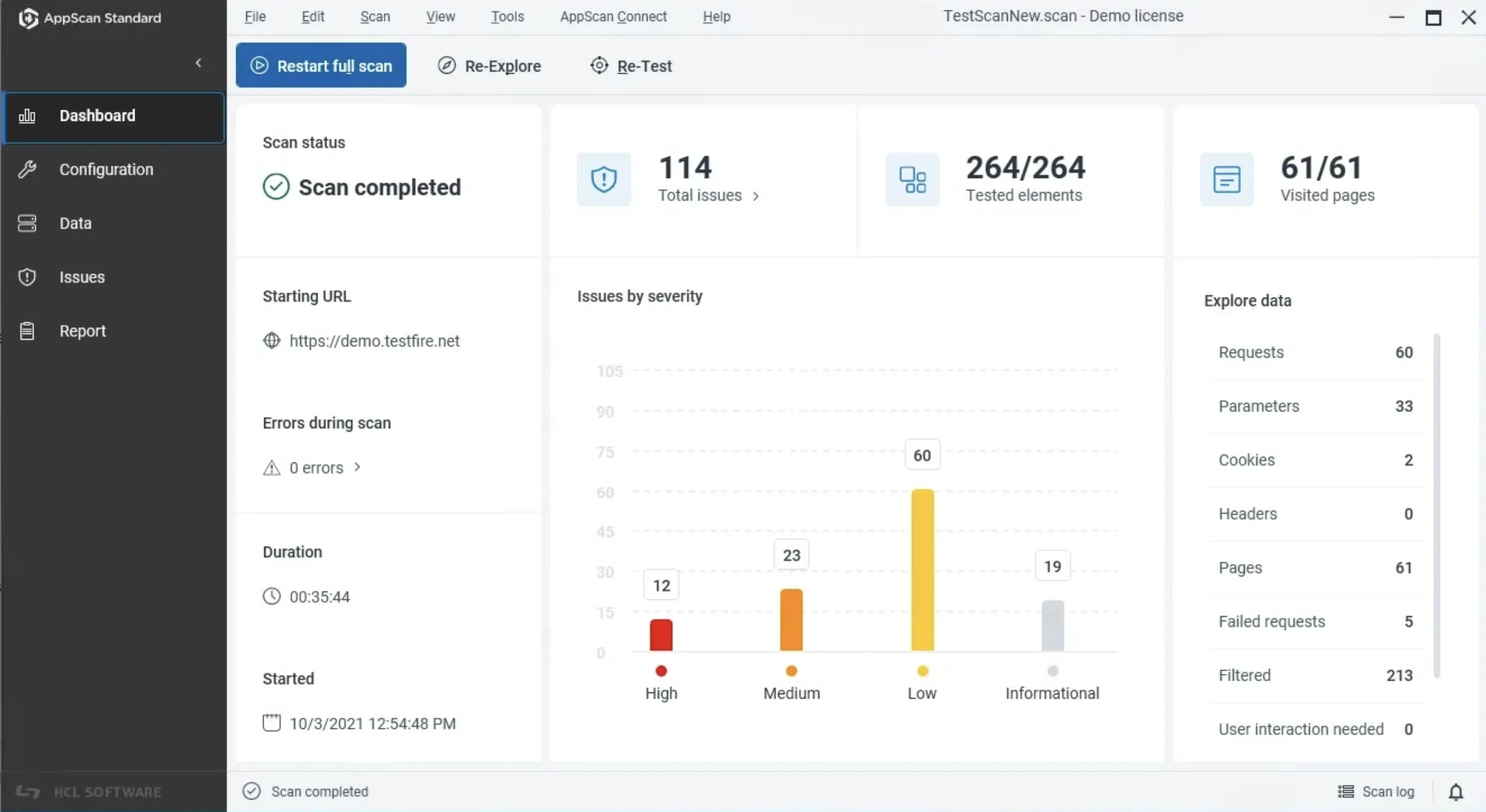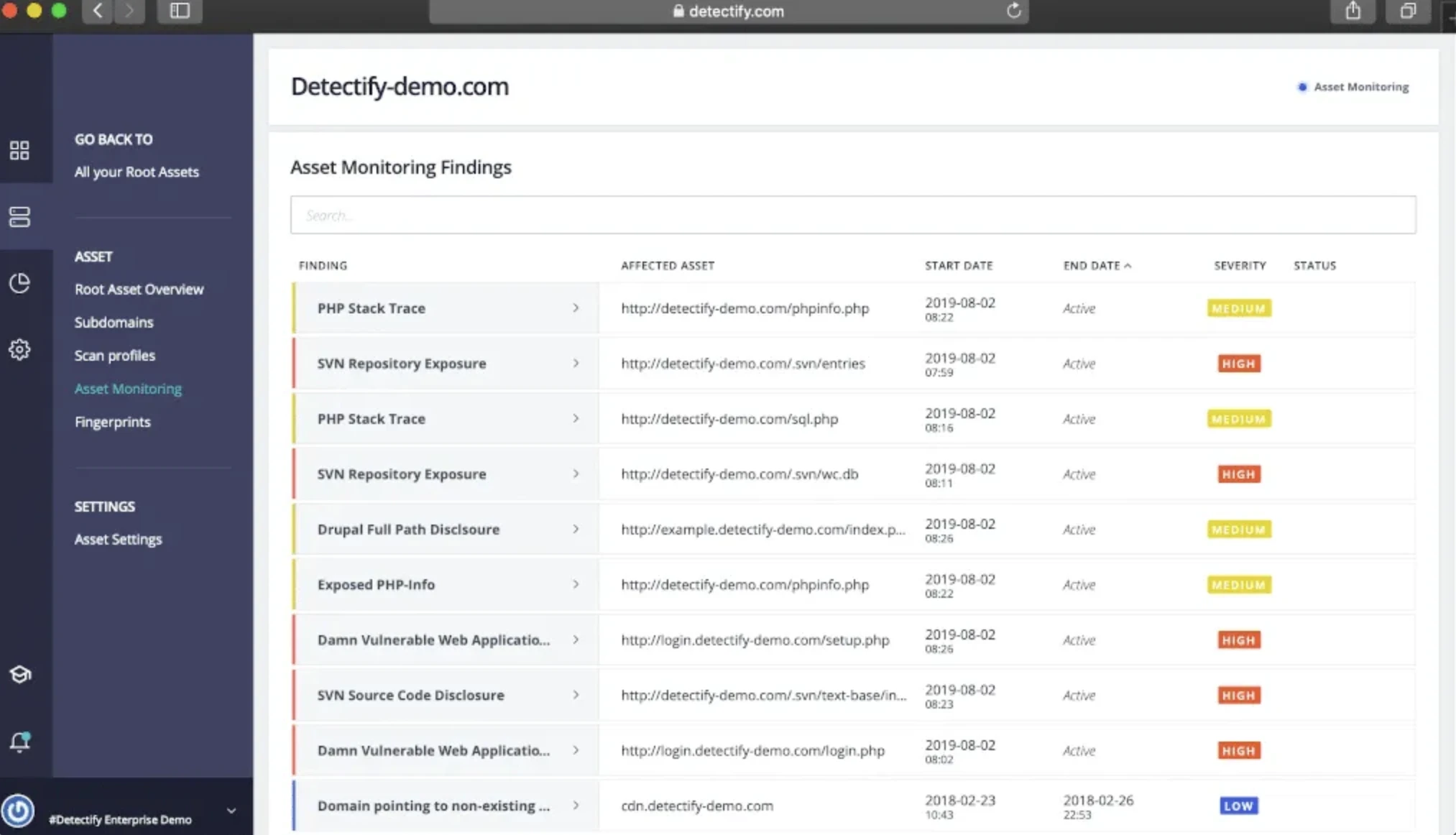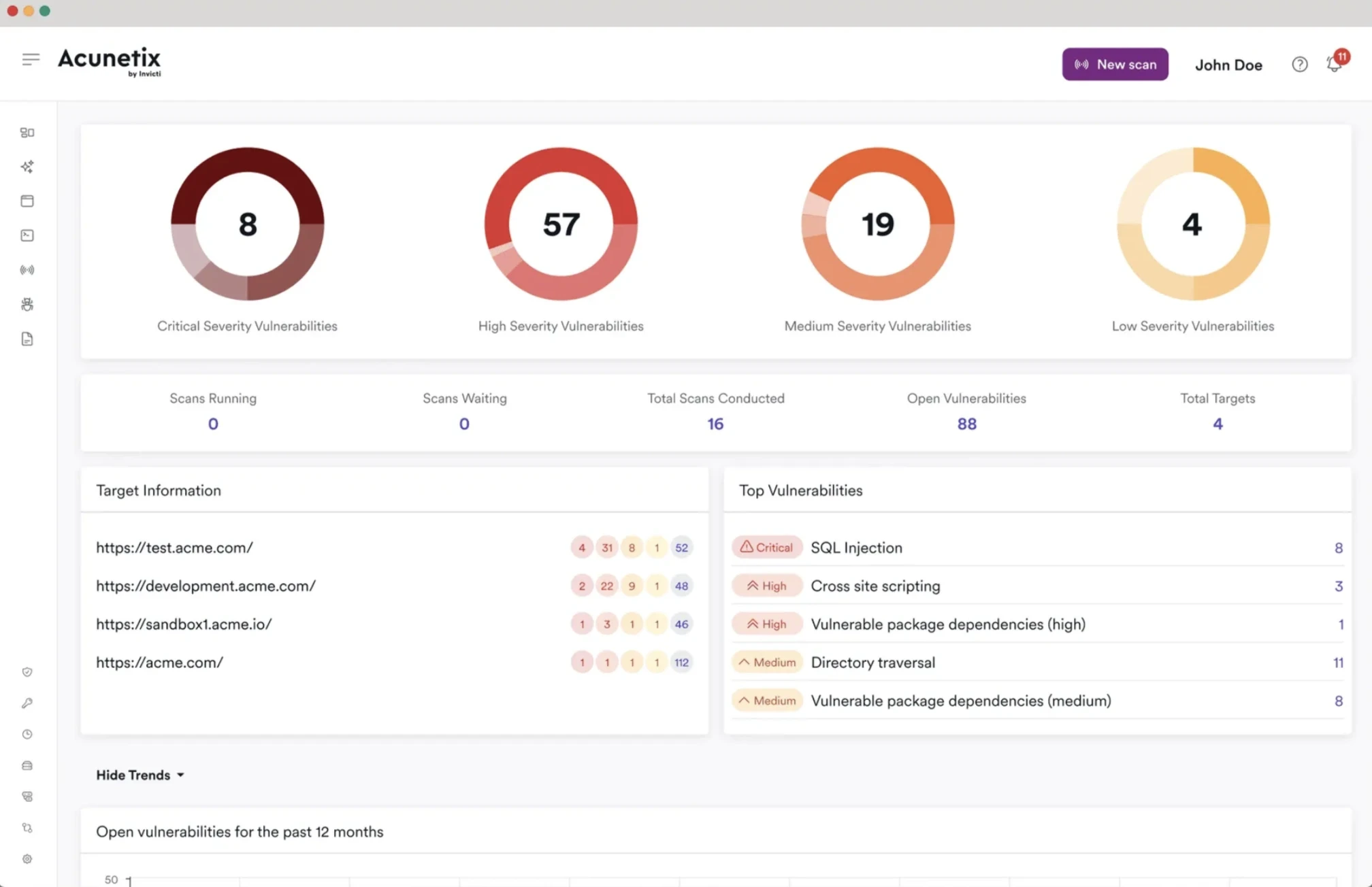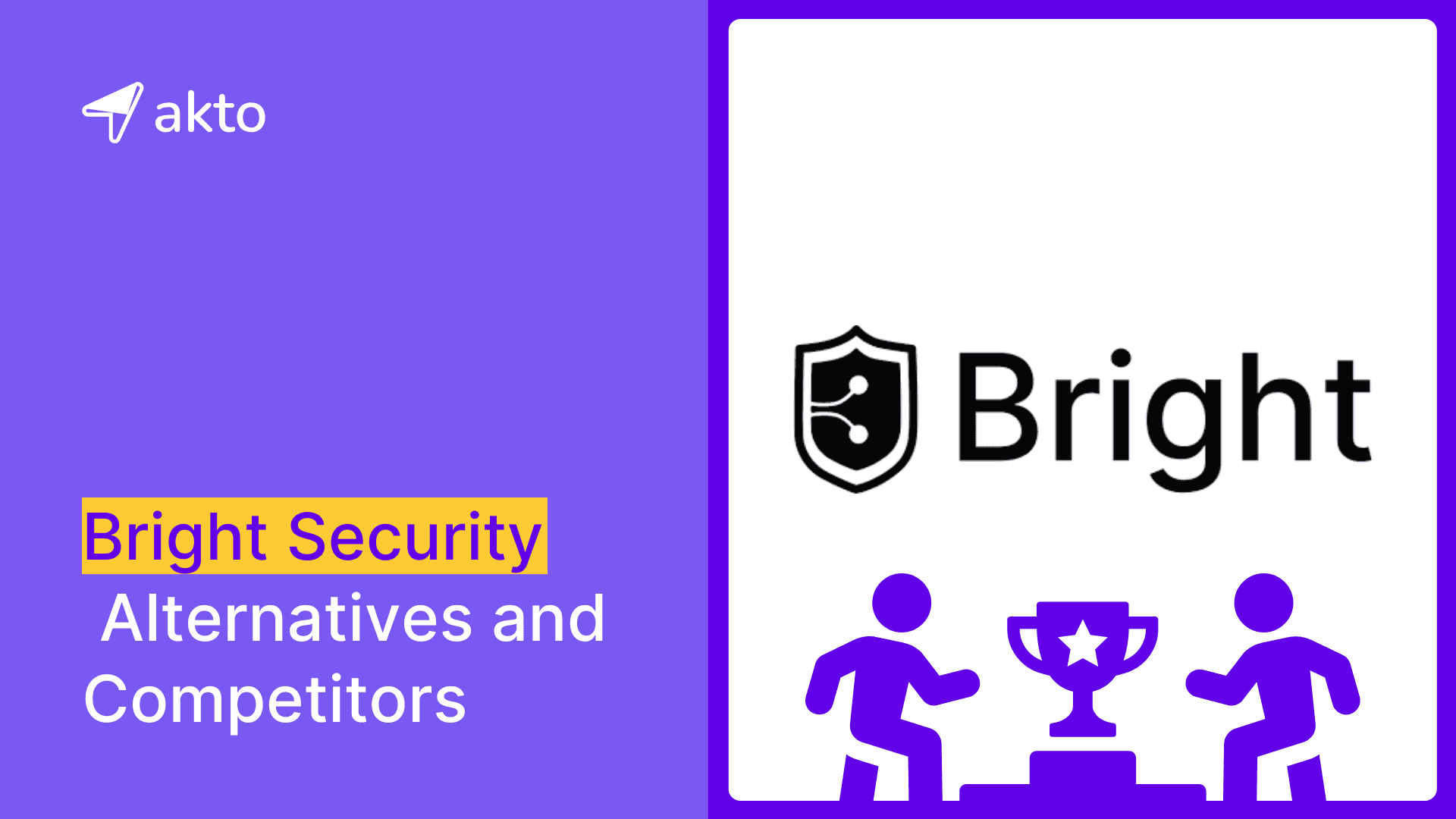Best Bright Security Alternatives and Competitors
Explore the best Bright Security alternatives in 2025. Discover leading API ecurity solutions with features and benefits compared to Bright Security.

Kruti
Jul 8, 2025
Bright Security is a DAST (Dynamic Application Security Testing) platform that focuses on rapid, accurate, and developer-friendly API and web app security testing. It integrates easily with CI/CD pipelines and focuses on automation, allowing security teams to identify vulnerabilities early in the SDLC without delaying releases. However, some firms prefer alternatives for specific reasons, such as increased coverage, more sophisticated corporate features, or better pricing structures. Dynamic application security has evolved, introducing new techniques with varying strengths. Here are the top ten Bright Security alternatives and competitors, each with distinct features tailored to the demands of different businesses.
Top 10 Bright Security Alternatives and Competitors
Looking for the best alternatives to Bright Security? Check out our list of the Top 10 Bright Security alternatives and competitors featuring top API security platforms known for strong vulnerability detection, reliable API protection, and easy integration with your existing tools. Find the right solution to boost your API security and fit your team’s needs.
1. Akto API
Akto API Security provides a full platform to protect modern APIs throughout their development. It constantly monitors traffic to detect new, undocumented, or risky endpoints in real time. Akto conducts automated tests with a wide range of vulnerability checks without interfering with production. Its adaptable deployment works for air-gapped, self-hosted, and cloud-based environments. Made for security engineers, Akto enables fast, reliable, and scalable API testing.

Features:
Automatic API inventory in cloud-based and on-premises environments
Over 300 prebuilt test cases for OWASP Top 10 and business logic flaws
Easy integration with CI/CD tools
Context-aware testing based on the environment
Real-time detection of shadow, zombie, and sensitive APIs
Advantages
Fast deployment with zero-code setup and auto-discovery capabilities.
Development-friendly UI that works with development workflows.
Provides unparalleled visibility into both internal and external API activity.
Higher test accuracy and fewer false positives.
Real-time identification and alerts for exposed data.
2. StackHawk
StackHawk is a DAST tool that focuses on shift-left security for APIs and web applications. Built with CI/CD in mind, it allows security engineers to run security scans as part of development workflows. StackHawk integrates easily with developer tools and allows to identify and remediate issues quickly. It supports OpenAPI and GraphQL-based testing and promotes collaboration between engineering and security.

Source: StackHawk
Features
Automated API security testing for CI/CD.
Integrates with GitHub, GitLab, and Jenkins.
Supports OpenAPI, GraphQL, and SOAP.
Developer-friendly corrective advice.
Role-based access and audit logs.
Advantages
Quick scan times in agile workflows.
Strong community support
Continuous feature upgrades.
Ideal for scanning, staging, and development environments.
Disadvantages
Lack of support for complex business logic testing.
To do accurate scans, test environments must be set up.
There is no native dynamic inventory of API tracking.
3. OWASP ZAP
OWASP ZAP (Zed Attack Proxy) is an open-source DAST tool for web applications. ZAP has automated and manual testing modes, which is why it is beneficial for both beginners and experienced users. ZAP is also customizable and extensible through several plugins and scripts.

Source: OWASP ZAP
Features
Supports manual and automated scanning of web applications and APIs.
Provides deep scanning with spidering and fuzzing features.
Allows scripting for advanced automation and bespoke tests.
Handles WebSockets and sophisticated authorization flows.
Provide plugins for additional features and operations.
Advantages
Free, open-source, and actively maintained.
Highly customizable and CI/CD friendly.
Ideal for learning and current API testing.
Disadvantages
Outdated user interface and steep learning curve.
It is necessary to conduct manual testing.
There is no enterprise-grade support.
4. Burp Suite
Burp Suite by PortSwigger is a widely adopted web security testing tool used by security professionals and bug bounty hunters. The paid version has a powerful DAST engine, a scanner, and manual testing tools. It offers a wide range of options for creating custom plugins and scripts. Burp Suite can test web apps as well as APIs, including GraphQL and WebSockets.

Source
Features
DAST scanner with crawling and active scanning features.
Offers manual testing tools like a repeater, intruder, and extension.
Contains support for API formats like JSON and GraphQL.
Allows extension for custom BApps from the PortSwigger store.
Session handling and custom authentication scripting.
Advantages
Allows detailed and manual risk checks.
Flexible and extendable to suit varied testing needs.
Great for complex app testing where automation alone falls short.
Frequent updates and excellent community resources.
Integrates well with browser-based testing workflows.
Disadvantages
Hard learning curve for beginners.
The paid edition is expensive.
It does not offer automated or continuous CI/CD testing.
5. Netsparker (Invicti)
Netsparker, now called Invicti, is a high-quality DAST platform that focuses on accuracy, scalability, and automation. It uses a Proof-Based Scanning method that eliminates false positives by assessing vulnerabilities. Netsparker supports contemporary frameworks and works with issue trackers and CI/CD workflows. It allows centralized management of large-scale testing activities.

Source: Invicti
Features
Proof-based scanning to automatically identify vulnerabilities
Central dashboard with team access control
Integrates with Jira, Jenkins, Azure DevOps, and more
Test SPAs, REST, and SOAP APIs
Correlates and reports issues across assets
Advantages
Accurate and validated results
Scales well for large teams
Strong compliance and reporting support
Smooth remediation workflow integration
Custom scan policies per environment
Disadvantages
High cost for smaller teams
Setup takes time
Limited manual testing features
6. AppScan (IBM Security)
AppScan is IBM’s mature application security testing platform that includes both DAST and SAST capabilities. It’s used by large organizations that perform deep security assessments on web apps, APIs, and microservices. AppScan integrates with DevOps pipelines and allows dynamic, static, and interactive testing options. It offers policy-based risk management and robust reporting features for compliance.

Source: AppScan
Features
Provides DAST, SAST, IAST, and mobile app security testing.
Deep integration with the IBM security ecosystem and SIEM technologies.
Risk-based guidelines for application governance and reporting.
Scanning profiles are customizable.
Supports REST, SOAP, and GraphQL API testing procedures.
Advantages
Comprehensive enterprise-scale solution with multiple layers of testing.
Scales well to extend across distributed environments, even large ones.
Provides regulatory reporting for compliance needs.
Integrates into DevOps delivery workflows for security in the software development lifecycle.
Disadvantages
Complex setup and hard learning curve for smaller teams.
UI and user experience can feel outdated.
High licensing and maintenance costs.
7. Detectify
Detectify is a cloud-based DAST platform that uses a network of ethical hackers to improve scan effectiveness. It performs automated scans that replicate real-world hacker attacks, including OWASP Top 10 and business logic flaws. Detectify easily connects with modern DevOps processes, providing quick scans and actionable insights.

Source: Detectify
Features
Full API and domain security testing, including subdomain monitoring.
CI/CD integrations include Slack, Jira, GitHub, and others.
Lightweight installation and cloud-based scanning engine.
Real-time vulnerability notifications and remedy recommendations.
Advantages
Leverages hacker community for continuously updated test logic.
No installation required, fully SaaS-based and scalable.
Dashboards are user-friendly, and reporting is simplified.
Quick scan cycles for agile environments.
Identify modern business logic flaws.
Disadvantages
Less appropriate for on-premise or offline settings.
Lacks manual or hybrid testing options.
May overlook major issues in an application.
8. Acunetix
Acunetix is a DAST platform renowned for its extensive coverage and ease of use. It can scan APIs, single-page applications, and legacy systems. Acunetix offers visual reporting, risk-based prioritization, and connection with CI/CD systems. It is used by organizations that need quick and accurate scans with minimal configuration. It supports both cloud and on-premise deployments, providing flexibility for various types of infrastructures.

Source: Acunetix
Features
Automatically scans for over 7,000 known vulnerabilities.
Tests REST, SOAP, and GraphQL APIs.
Provides IAST features with AcuSensor integration.
It works with GitLab, Jenkins, Azure DevOps, and Jira.
Offers risk checks and a vulnerability management dashboard.
Advantages
Easy to set up with less manual tuning.
High scan speed with good detection rates.
On-premise and cloud deployment options for flexibility.
It provides both interactive and automated testing support.
Strong visualization for scan results and trends.
Disadvantages
Limited manual testing and customization options.
Occasional false positives in some application flows.
UI may be awkward for large-scale scanning operations.
9. Astra Pentest
Astra Pentest offers a hybrid approach to application security testing by combining automated DAST scans with manual security reviews. It is designed to serve both SMEs and enterprises looking for continuous protection with human expertise. Astra provides pentest reports with detailed remediation advice, making it popular among organizations that follow compliance.

Source: Astra Pentest
Features
Combines manual testing and automated scanning.
Supports OWASP Top 10, SANS 25, and custom business logic tests.
Real-time vulnerability dashboard and 24-hour chat assistance.
Offers compliance-specific reports (ISO, SOC2, HIPAA).
Provides a penetration testing certificate after remediation.
Advantages
A strong emphasis on human-verified, reliable results.
Excellent support and individual remediation help.
Ideal for enterprises seeking security certification.
Streamlined onboarding and collaboration tools.
Disadvantages
Slower turnaround time than other platforms.
Manual validation costs more per scan.
Scalability is limited in fast-paced environments.
10. Wallarm
Wallarm is a security platform for APIs, microservices, and serverless settings. It includes API security testing, WAF features, and behavioral threat detection. Wallarm uses runtime monitoring to provide ongoing protection against the OWASP API Top 10 and bot traffic. It supports hybrid cloud setups and works effectively in Kubernetes-native environments.

Source: Wallarm
Features
API security scanning with integrated runtime protection (WAAP).
Supports gRPC, GraphQL, REST, and WebSockets.
Behavioral anomaly detection and AI-based threat identification.
Supports Cloud and Kubernetes environments.
Active testing uses attack replay and fuzz testing via APIs.
Advantages
Combines detection and security, all in a single tool.
High scalability for large, modern application stacks.
Real-time protection against bots, DDoS attacks, and API misuse.
Provides security visibility across various tiers.
Supports modern protocols.
Disadvantages
Focus on API security can ignore general web app functionality.
Complex configuration for hybrid deployments.
Sophisticated features have higher tiers for pricing.
How to Choose the Best API Security Solution
Choosing the right API security platform needs a balance of automation, accuracy, and integration that aligns with your development and security priorities.
Coverage of API Types and Protocols
Your API security solution should support a wide range of protocols, including REST, SOAP, GraphQL, and gRPC. Comprehensive protocol coverage ensures that no part of your attack surface remains exposed. Many legacy and third-party systems still use less common formats that require attention. Without complete protocol coverage, testing is incomplete, and risk persists. Choose tools that handle various formats and new technologies.
Integration with CI/CD Pipelines
Security testing must fit seamlessly into modern development workflows. Look for platforms that integrate natively with Jenkins, GitHub Actions, GitLab, or Bitbucket. The idea is to shift security to the left, executing tests with each code push or deployment. It should also provide automatic input during development to reduce risk while maintaining system performance.
Accuracy and False Positive Reduction
High false positive rates waste time and erode trust in security tools. Choose tools that offer proof-based detection or AI-powered validation to cut down on unnecessary alerts. The platforms should confirm findings through active exploitation or cross-checking before reporting issues. This allows teams to concentrate on genuine risks, not distractions.
Visibility and Inventory Management
A real-time API inventory helps identify shadow api, zombie api or undocumented APIs. API discovery through traffic analysis or integrations with gateways makes these APIs visible. If organizations don't have full awareness of their APIs, then blind spots still remain, and threats could go undetected. Good inventory management also supports lifecycle governance and policy enforcement.
Support for Compliance and Reporting
The platform should simplify compliance for frameworks like OWASP API Top 10, SOC 2, PCI DSS, and HIPAA. Built-in compliance templates and exportable reports help demonstrate due diligence. These features simplify audits and internal risk reviews. If platforms provide tailored reports, developers, management, and auditors can make decisions quickly. The right tool turns compliance into a continuous, automated process.
Final Thoughts
Bright Security has become a fast, developer-friendly DAST platform for APIs and modern web apps. Its emphasis on automation and simple CI/CD integration makes it ideal for organizations with rapid development cycles. The platform offers features for early testing, but it might not meet the needs of organizations requiring full testing coverage, API inventory management, and support. These flaws can harm enterprises with sophisticated systems or high security requirements.
Akto is an API security platform with an AI suite that allows for automatic discovery, testing, and protection in a single workflow. It features over 300 test cases, keeps a live API inventory, and integrates easily into CI/CD pipelines without any need for code changes. The lightweight design provides clear visibility into internal and external API risks. Akto supports ongoing security across both development and production environments. Schedule a free API Security demo to see how Akto can protect your APIs at scale.
